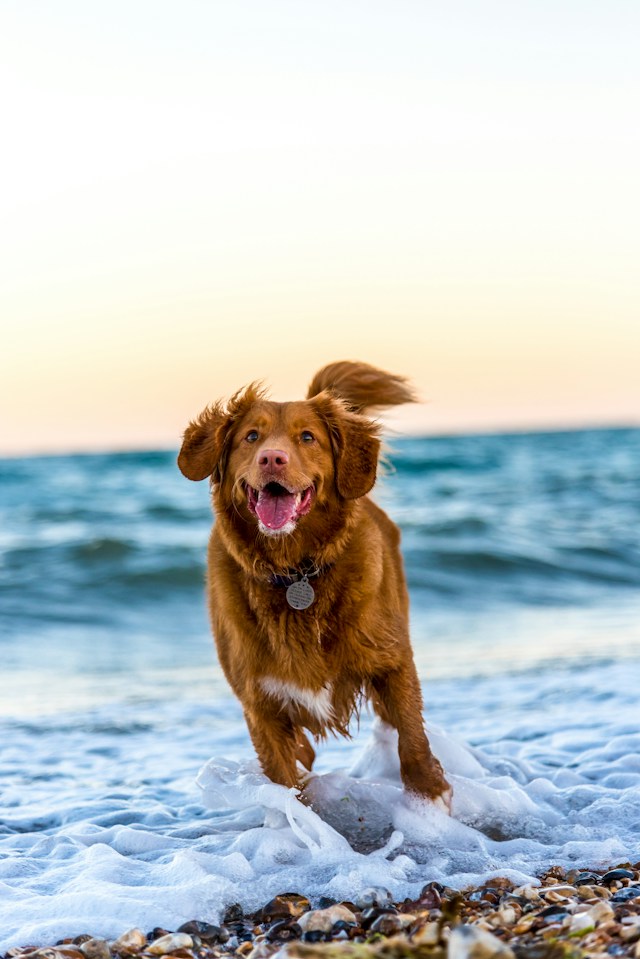How to Help a Dog Overcome Fear of Water?

Have you ever heard the phrase ‘Like a duck to water’ and assumed that it applies to all animals? Well, you’re not alone. Many people believe that all dogs are natural swimmers. However, the truth is far from this. Just like people, dogs may also suffer from aquaphobia, a fear of water, which can be a significant hindrance in their life. This fear could be due to a bad experience, lack of exposure, or just an inherent fear of the unknown. Whatever the cause, helping your pet overcome this fear is essential for their overall well-being.
Understanding Your Dog’s Fear
Before you start with any training or help, you need to understand your dog’s fear. Fear of water in dogs can manifest in different ways, such as showing anxiety around pools, avoiding bath time, or even life changes like refusing to drink water or go out in the rain. Understanding your dog’s fear is the first step towards helping them overcome it.
Dans le meme genre : How to Identify Nutritional Deficiencies in Pet Lizards?
En parallèle : How Can You Effectively Train a Dog for Competitive Obedience?
The fear of water can come from various factors. It could be a past traumatic experience like a near-drowning incident, negative associations like forceful baths, or just the overwhelming sensation of being surrounded by water. Sometimes, certain breeds like Bulldogs or Pugs are naturally less inclined towards water due to their body structure, which can make swimming challenging for them.
Sujet a lire : How Can You Effectively Train a Dog for Competitive Obedience?
Initiating a Positive Association with Water
Once you’ve identified the source of your dog’s fear, the next step is to help them form positive associations with water. This can be achieved by incorporating water into their favorite activities gradually.
En parallèle : How to Identify Nutritional Deficiencies in Pet Lizards?
One of the ways to start this process is to make bath time more enjoyable. Rather than forcing your dog into the bath, create a positive environment by including their favorite toys, giving them treats, and using warm water. Also, try to make the process as quick as possible to minimize their stress.
Another effective method is to introduce water games. On a hot day, fill a small pool with a little water and encourage your dog to step in. You can throw in some treats or their favorite toy to make it more appealing. Remember to praise them generously when they make any progress, no matter how small.
Training Your Dog to Swim
Training your dog to swim can seem like a daunting task, especially if they’re scared of water. But with patience and perseverance, it’s possible.
Start by choosing a safe and quiet location. A small pool or a shallow part of a calm lake would be ideal. Ensure your dog wears a life vest for added safety. Start by walking them around the water body to familiarize them with the environment.
Next, get into the water yourself and encourage your dog to follow. If they’re hesitant, you can use treats or toys to coax them in. Start by splashing a little water on them, then gradually lead them deeper. Always stay close to provide physical and emotional support. Remember, the goal is to make them comfortable in water, so it’s crucial not to rush the process.
Distracting Your Dog with Food and Toys
Food and toys can play a significant role in helping your dog overcome their fear of water. If your dog is food-motivated, use their favorite treats to encourage them to get closer to water bodies or during bath time. However, ensure to offer these treats only when they make progress to reinforce positive behavior.
Similarly, if your dog has a favorite toy, you can use it to lure them into the water. Start by playing with them near the water and gradually move the game closer to it. This will help them associate water with fun times, eventually reducing their fear.
Regular Practice and Patience
Just like any other form of training, helping your dog overcome their fear of water requires regular practice and a lot of patience. Do not force them into the water if they show signs of distress. Instead, take a step back and try again later.
Always keep the training sessions short and positive. If your dog seems to be having a hard time, stop the session and resume later or the next day. Also, incorporate water-related activities into their daily routine gradually. This will give them enough time to adjust and adapt to the new experiences.
Remember, every dog is unique and so is their pace of learning. What works for one dog might not work for another. Thus, it’s essential to be patient and persistent in your efforts. With time and consistent efforts, your furry friend will surely overcome their fear of water and might even start enjoying it!
Using Life Jackets for Your Dog’s Safety
When trying to help your dog overcome their fear of water, one tool that can be invaluable is a dog life jacket. This safety gear not only keeps your pet afloat in the water, but it can also provide an added sense of security and confidence.
Dog life jackets are designed to fit snugly around your pet’s body, providing buoyancy without hindering their movement. They often feature handles on the top, enabling pet parents to easily grab and guide their dogs in the water. Additionally, many life jackets come with bright colors and reflective strips, enhancing your pet’s visibility in the water.
Before introducing your dog to a body of water, let them wear the life jacket around the house to get used to it. Reward them with their favorite dog food or treat when they behave calmly while wearing it. This helps create a positive association with the life jacket itself.
When initiating your dog to water, start slow. Encourage your dog to step into shallow water while wearing the life jacket. Stay by their side, providing comfort and reassurance. Use a calm and positive tone to reinforce that there’s nothing to be scared of.
Remember, even with a life jacket, never leave your dog unattended near or in the water. Always maintain close supervision to ensure their safety during this process.
Observing Your Dog’s Behavior Around Water
A significant part of helping your dog overcome fear water is careful observation of their behavior. As a pet parent, it’s crucial to understand your dog’s body language around water, as it can give you valuable clues about their comfort level and readiness to approach water.
Signs that your dog is scared of water may include excessive pacing, whining, retreating, or showing other signs of anxiety when near water. If your dog exhibits these behaviors, it’s essential to respond with patience and understanding rather than force.
Instead, recognize their fear and take steps to alleviate it. Try to distract them by engaging in a game or offering a toy. A familiar activity can help divert their attention from the water, and over time, they may begin to associate water with these positive experiences.
When your dog begins to show less fear and anxiety around water, praise them enthusiastically, and reward them with their favorite treats. This positive reinforcement will encourage them to continue overcoming their fear.
Conclusion: Overcoming Fear of Water Requires Time and Patience
Ultimately, helping a dog overcome fear of water is not an overnight process. It requires a lot of patience, understanding, and consistency from pet parents. Always remember to take it slow and never force your dog into situations that cause them distress. Each small step your dog takes towards overcoming their fear of water is a victory and should be celebrated.
Use tools such as life jackets for added safety, and pay attention to your dog’s behavior to gauge their comfort level. Also, remember to use positive reinforcement, like dog food or toys, to encourage progress.
In time, you’ll see your dog’s confidence around water start to grow. They may even begin to enjoy water-related activities such as swimming or playing fetch in the pool. As a pet parent, witnessing your dog overcome their fear can be a rewarding experience, knowing that you’ve helped enhance their quality of life and open up a new world of fun for them.
